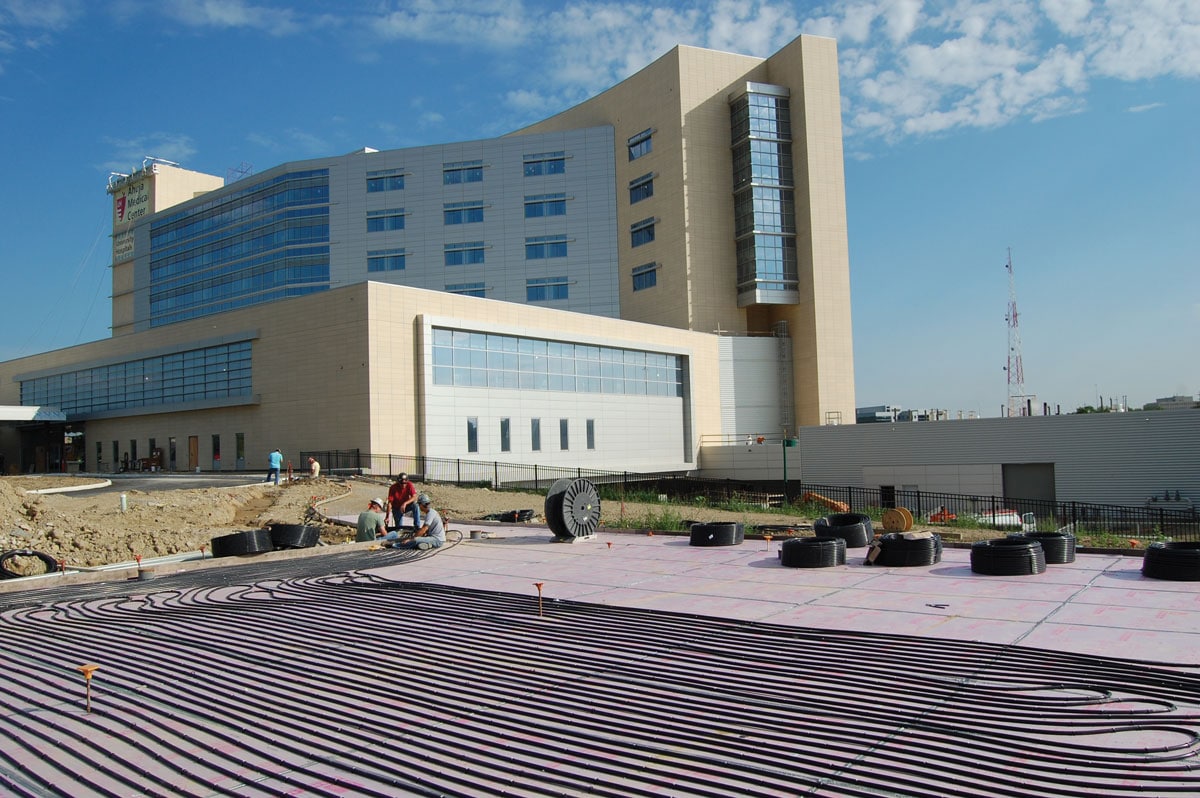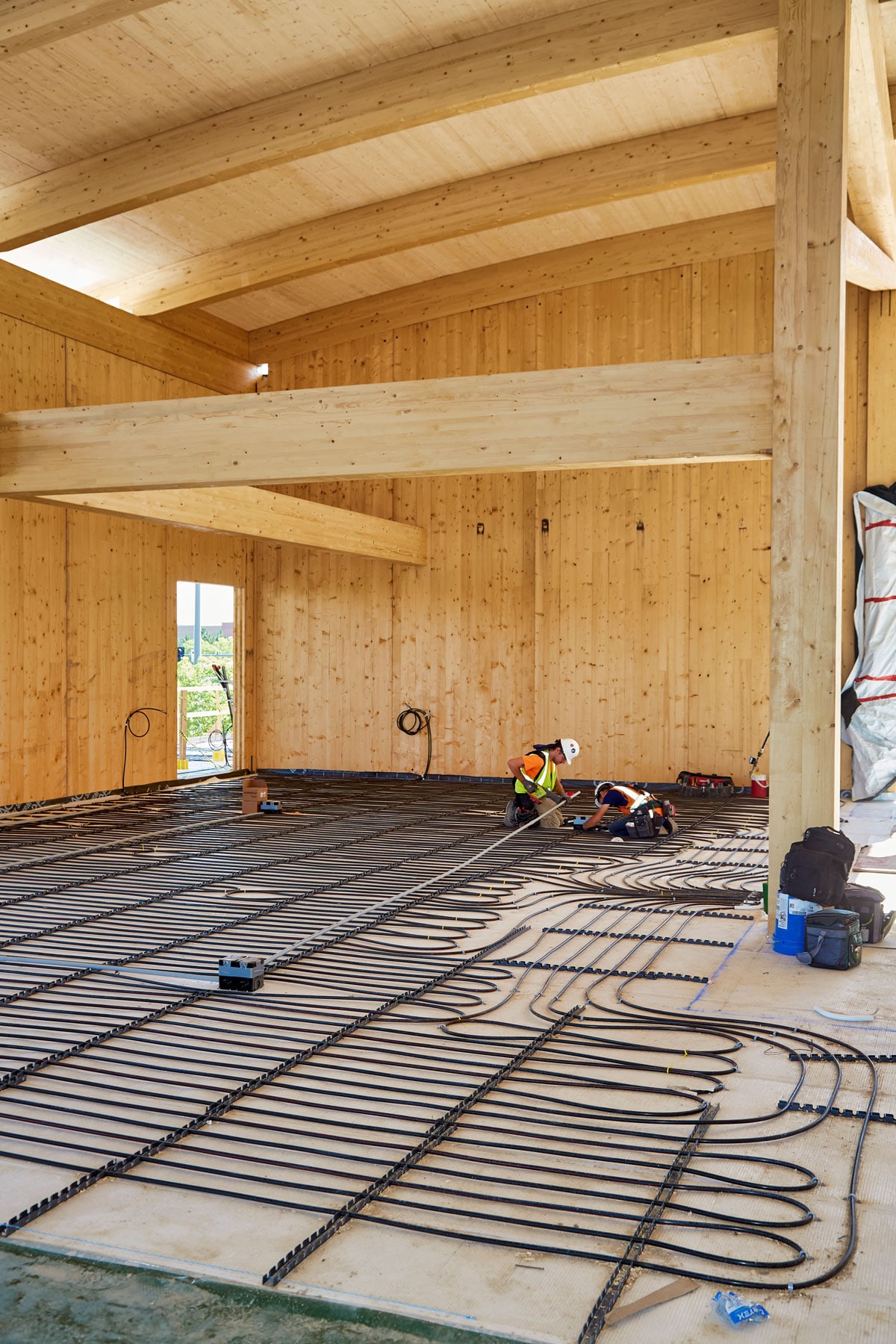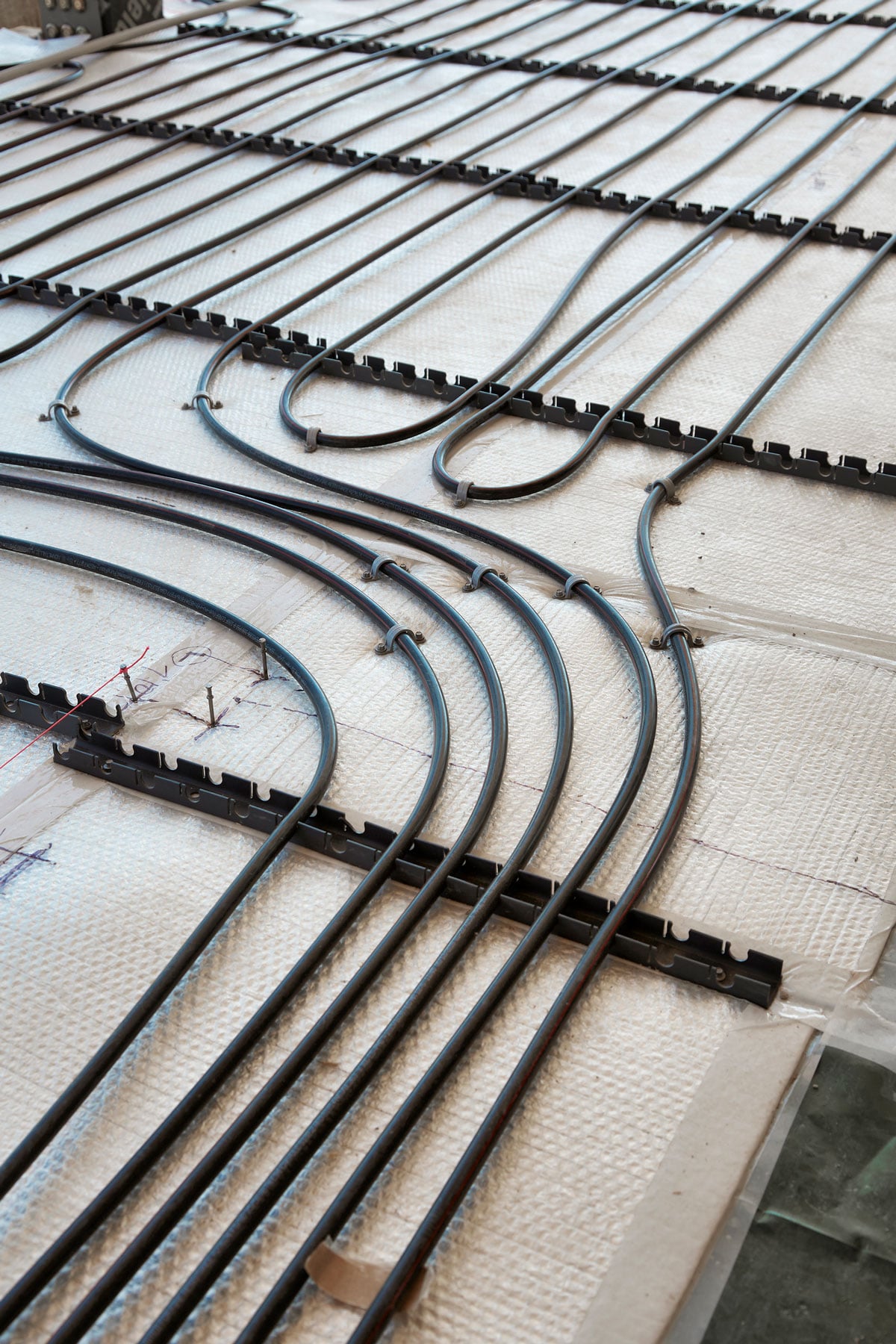
Photo courtesy of Viega
Viega has been in the business of innovation for more than 100 years. It was founded in 1899, starting, surprisingly enough, with beer taps before evolving into the world of fittings, flushing systems, and beyond. Today Viega leads the plumbing industry, offering the best in radiant heating and cooling solutions. Its radiant systems provide increased comfort and efficiency for residential, commercial, and industrial projects.
How does radiant work?
Viega’s solutions include design services for both residential and commercial radiant projects. Viega specializes in hydronic heating, with tubing embedded in the floor for a cleaner, quieter operation than forced air. The radiant system conditions the entire floor surface so the system temperature can be set lower and operate more efficiently. Systems run the gamut depending on need, from straightforward floor tubing to a large commercial system with multiple boilers and water chillers. “These operate very efficiently, yet there’s more research now going into how to make these systems even more efficient by adding things like user-controlled ceiling fans,” says Josh Quint, product manager.
When does radiant work best?
“Radiant works really almost anywhere a standard forced air system will work,” says Adam Botts, assistant product manager, dispelling an outdated misconception that radiant shouldn’t be used in humid locales. “Existing building control systems dehumidify the ventilation air to the point that a space never reaches the dew point but remains comfortable for occupants. For example, if you’re in a building in Atlanta or New Orleans, there are building controls and dehumidifiers to keep the humidity below dew point so a radiant cooling job is going to perform just fine.”
Radiant heating has been around since the time of the Romans, though it hasn’t always been used properly in the US. Quint says its adoption has been set back by an early mistake in material choice. “Back in the ’50s, there were a lot of radiant homes that were using copper embedded in concrete instead of PEX tubing, which wasn’t around yet. The copper corroded over time and systems failed, so that gave radiant a bad name just as air conditioners were being mass marketed. But, in reality, they were using the wrong materials.”
These days, with durable PEX tubing and other innovations, a radiant system can last decades and operate much more efficiently than the alternatives.
“The biggest concerns people have can be remedied when the system is designed and installed properly, which we’re there to help with,” Quint says. “Radiant has been around for thousands of years and it’s proven in Europe that it’s a very good system when designed and installed correctly.”
Viega’s team of designers and mechanical engineers can build the perfect system in-house while ensuring everything’s working when installed. Viega’s design team builds systems that are both efficient and safe while working with the architect, engineer, or building owner from project inception through installation.

Photo courtesy of Viega
How does radiant increase comfort?
Viega works with the Center for the Built Environment at UC Berkeley to incorporate the latest research around occupant comfort in commercial buildings. “A lot of these studies have proven you can actually have lower temperatures in a heating situation or higher temperatures in a cooling situation and people are still more comfortable than with a traditional air system,” Quint says.
The words “forced air” say it all, according to Botts. “You’re blowing air over somebody, which creates convection against the skin. If you’re already cold, this causes you to feel even colder.”
By contrast, radiant provides a single, consistent temperature across an entire floor. “Radiant is more comfortable,” Botts says. “And human comfort is about 60% defined by the amount of radiant heat transferred, where the remainder is convective, evaporative, respiratory, and conduction in very small amounts. That radiant heat transfer is what actually makes us feel comfortable.”
Plus, forced air systems pull air out of a space and warm it up elsewhere, allowing for heat loss in the ductwork while distributing less warm air, perhaps even in an empty room. “If you put a thermometer up on a high ceiling it could be five degrees or more warmer up there, and that is a lot of energy you’ve spent conditioning air that is being delivered to an unoccupied area,” Botts says.

Photo courtesy of Viega
How is radiant cost-effective?
Viega’s Climate Mat is one way to further reduce costs. It is a pre-engineered system that uses barrier tubing to reduce labor during installation. “Instead of laying this tubing out onsite, we’re doing in-house production of 6-foot-wide mats specific to customer’s projects,” Botts says.
A crew unloads the mat right from the truck to the job site, rolling the tubing out based on detailed drawings from Viega’s design team. “A team of three will lay out 2,000 square feet of tubing per day in a traditional installation, but if you’re using the Climate Mat, you can install 20,000 square feet per day with the same three workers. You see a huge savings in time and manual labor,” Botts says.
Also, the alternative method typically calls for a plumbing crew, which can cost more than technicians rolling out tubing. Needless to say, you can lay a lot more tubing with Climate Mat, and the labor savings has a positive impact on your bottom line. “If you’re looking at something like a 200,000-square-foot project, you may pay $100,000 extra in materials, but your labor savings over the course of an entire month of installation versus installing a Climate Mat in only a week saves you about $300,000 in labor,” Botts says. “Your return on a traditional installation versus Climate Mat is immediate.” It also allows the project to progress faster.
What other innovations are out there?
For retrofits, Viega offers Climate Panel, which is easy to install and adds just a half-inch in height to the floor. “As long as your floor is being removed anyway, it’s a really simple installation,” Botts says. “It’s even easier for new builds.” Virtually any floor covering can be installed on top of Climate Panel: tile, carpet, hardwood, or other engineered floorings.
Viega’s snow melt system is useful in areas like hospitals, airports, and downtown streets. “When you install snow melt there’s a good payback period versus hiring people to shovel and bringing trucks in to pile snow up,” Botts says. “There’s also a huge environmental benefit, compared to salting everything constantly. Salt can kill your landscape; it can be tracked into buildings and damage carpeting. It leaches into water supplies and causes environmental damage, too.”
Whether the need is for industrial, commercial, or residential heating or cooling solutions, Viega has the products and expertise to make it work.

